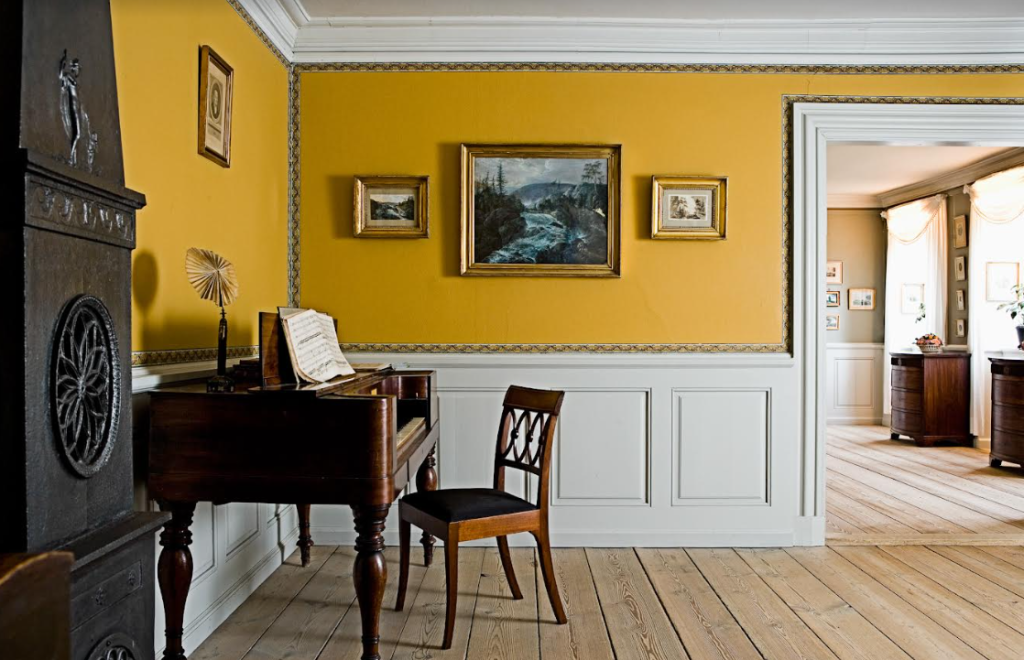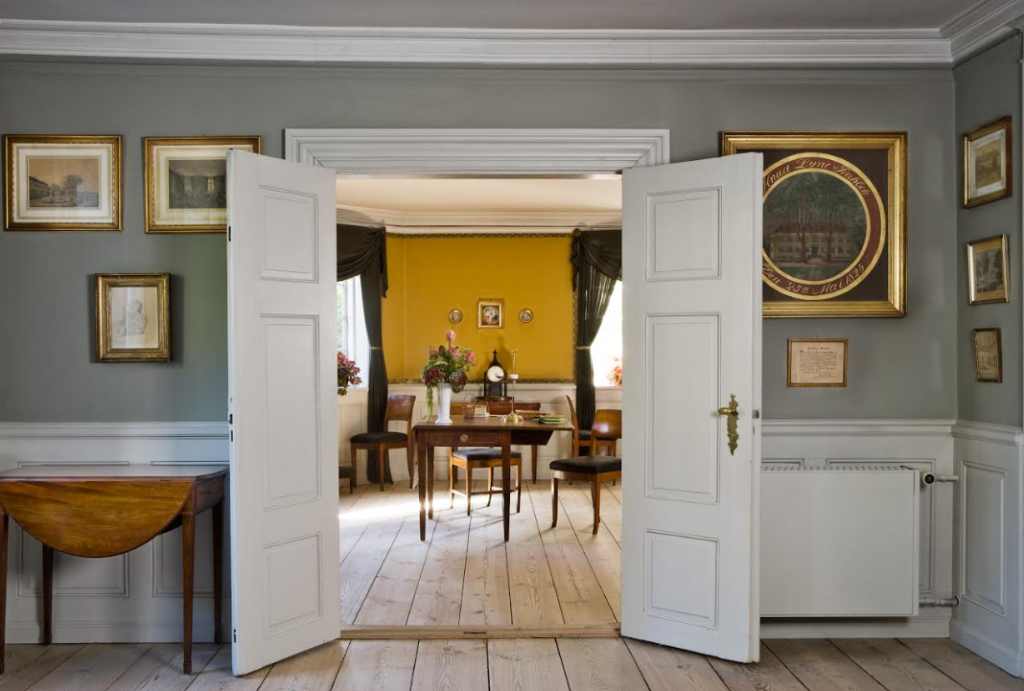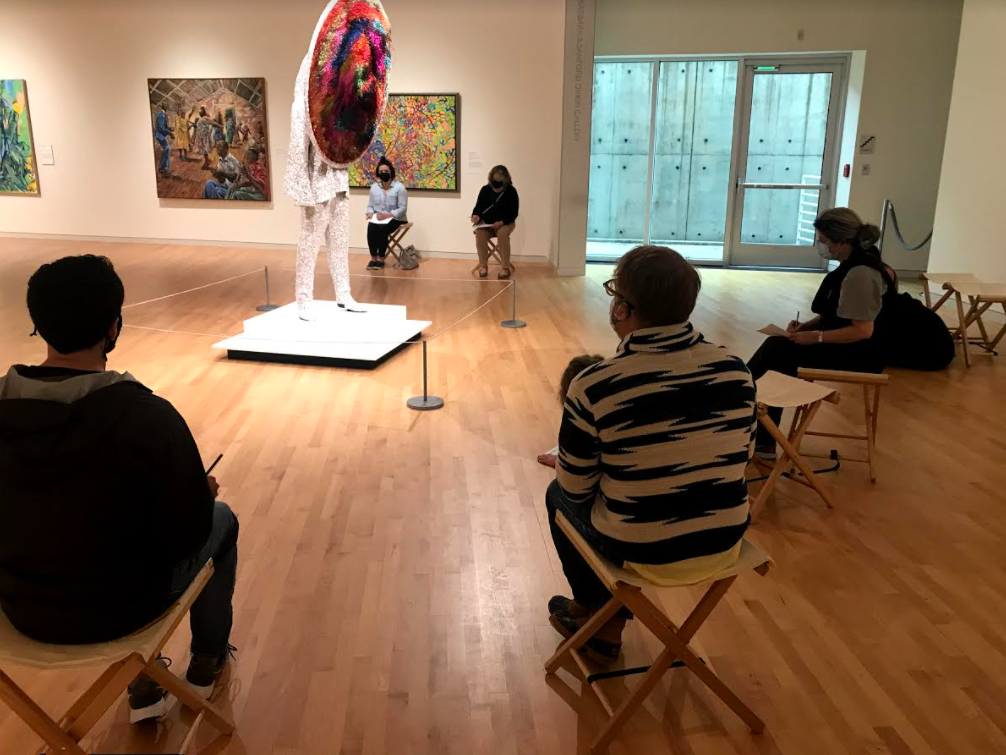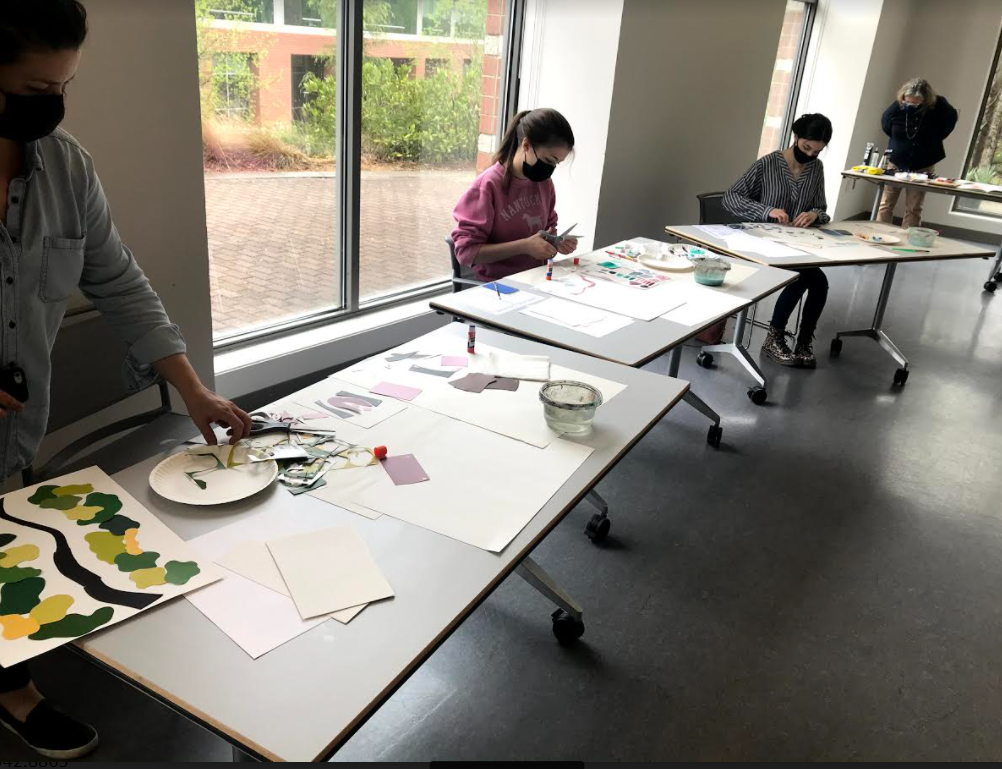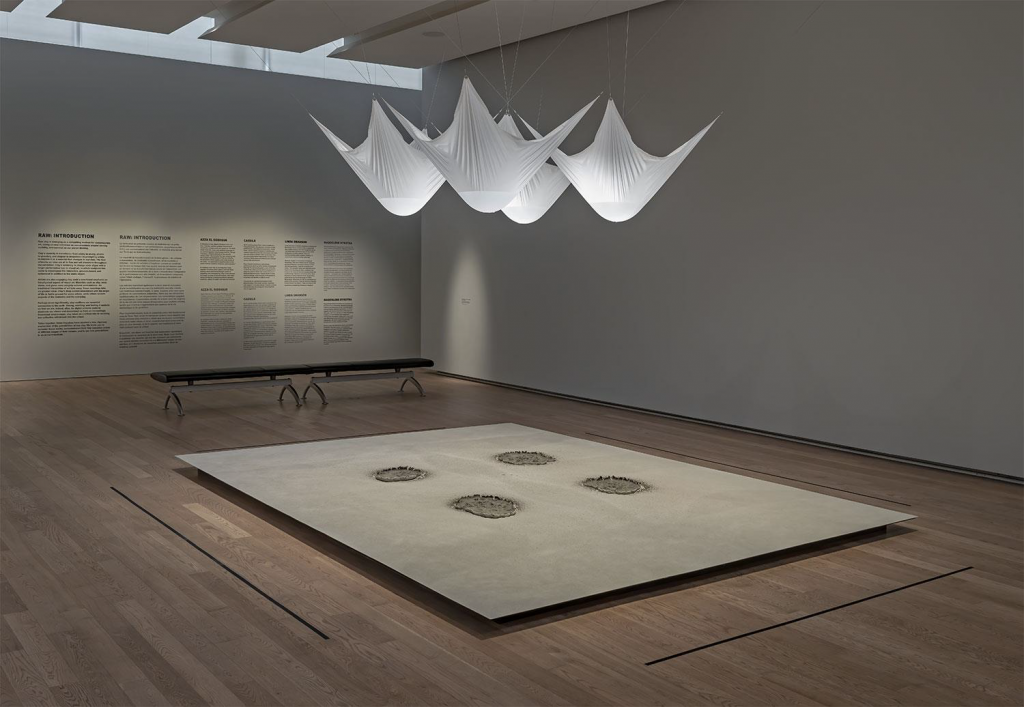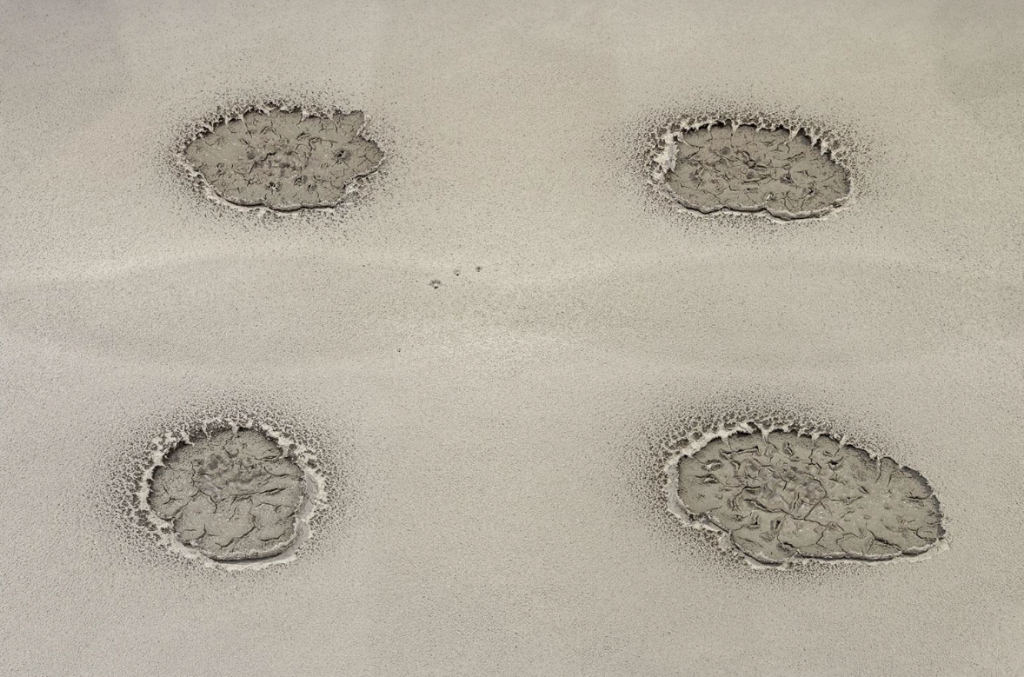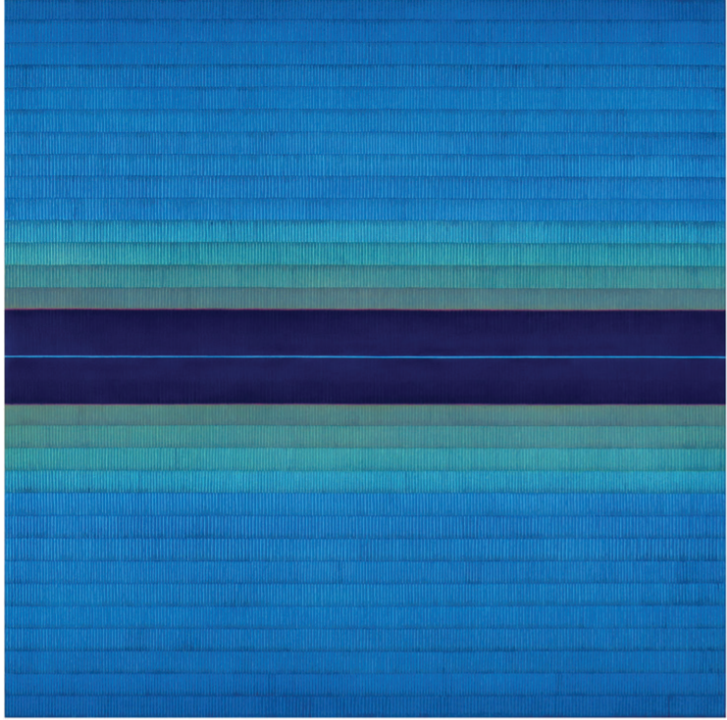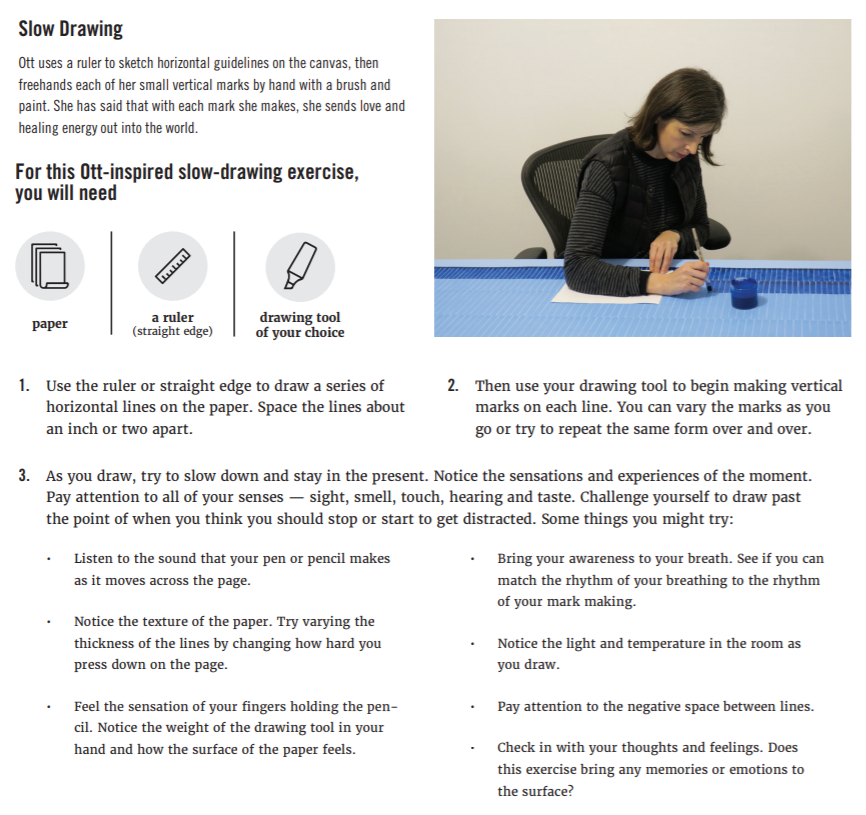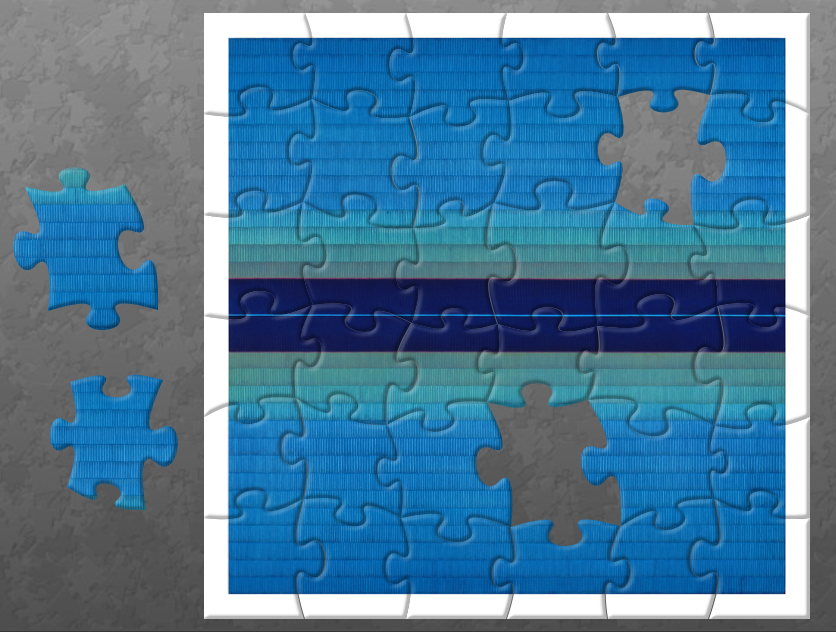For their 5th Slow Art Day, the Gothenburg Museum of Art in Gothenburg, Sweden, hosted two events:
- A guided meditation with artist and yoga instructor Pernilla Ljungqvist in front of the artwork “Höstafton, Nordingrå” by Helmer Osslund (1866 – 1938) – adults and teens were invited to join this one.
- Slow looking and drawing workshop consisting of two parts: one in the Museum collection where they practiced slow looking exercises, and another in the Museum studio where they created their own artwork – this was a children’s workshop.

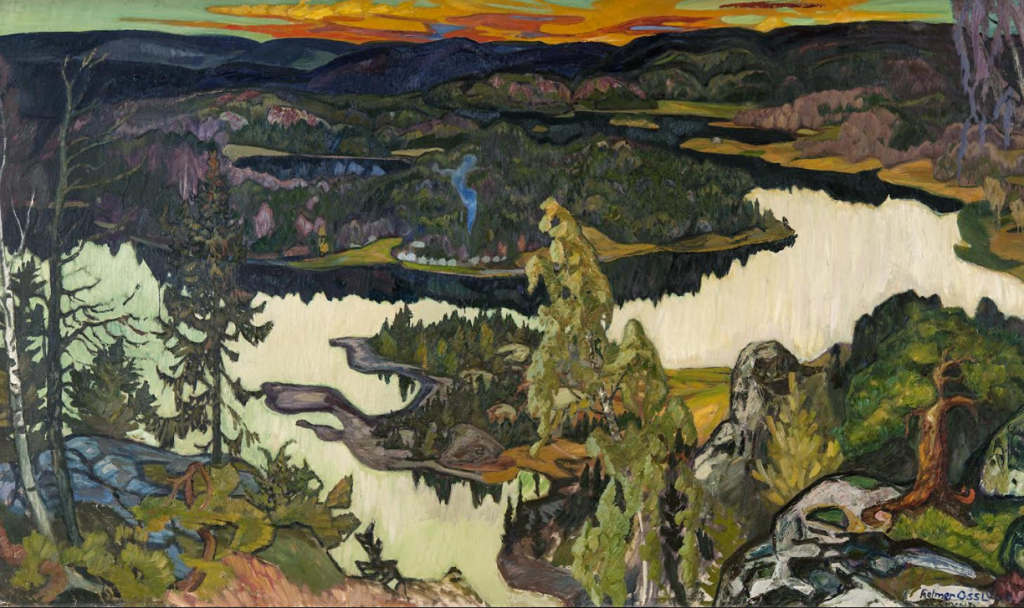
For the first activity, Pernilla, the meditation instructor, invited participants to look slowly at the artwork “Höstafton, Nordingrå.” Next, they relaxed into a comfortable position on a mat in front of the work as Pernilla guided them through simple motions and exercises while looking slowly at the painting.

During the children’s workshop, the kids looked at three artworks using different slow looking techniques focused on noticing new details in each. During the second half of the session, they were invited to paint with frozen colors on watercolor paper (again, this was done in the museum studio). The goal was to use a tactile material, which could activate several senses and emotions *and* in which the concept of time was present in the material itself. Frozen paint to illustrate time and slowness – how cool!



At Slow Art Day HQ we love the idea of using frozen paint in a workshop studio for kids (and hey – us adults would enjoy that too) while running a guided meditation for adults.
For readers not familiar with Gothenburg, it is the second largest city in Sweden situated on the west coast near the Kattegat. The city was built on marshy land and the layout of the city was inspired by Dutch cities like Amsterdam.
The Gothenburg Museum itself is the third largest in Sweden and hosts a collection of 19th century Nordic art as well as a range of modern, contemporary, and older works.
We appreciate the museum’s decision both to offer different events for kids and adults and the way they designed each of those sessions. We eagerly look forward to whatever they come up with for Slow Art Day 2025.
-Johanna, Ashley, Jessica Jane, and Phyl
P.S. Stay up to date with events at Gothenburg Museum of Art via their Facebook or Instagram.

